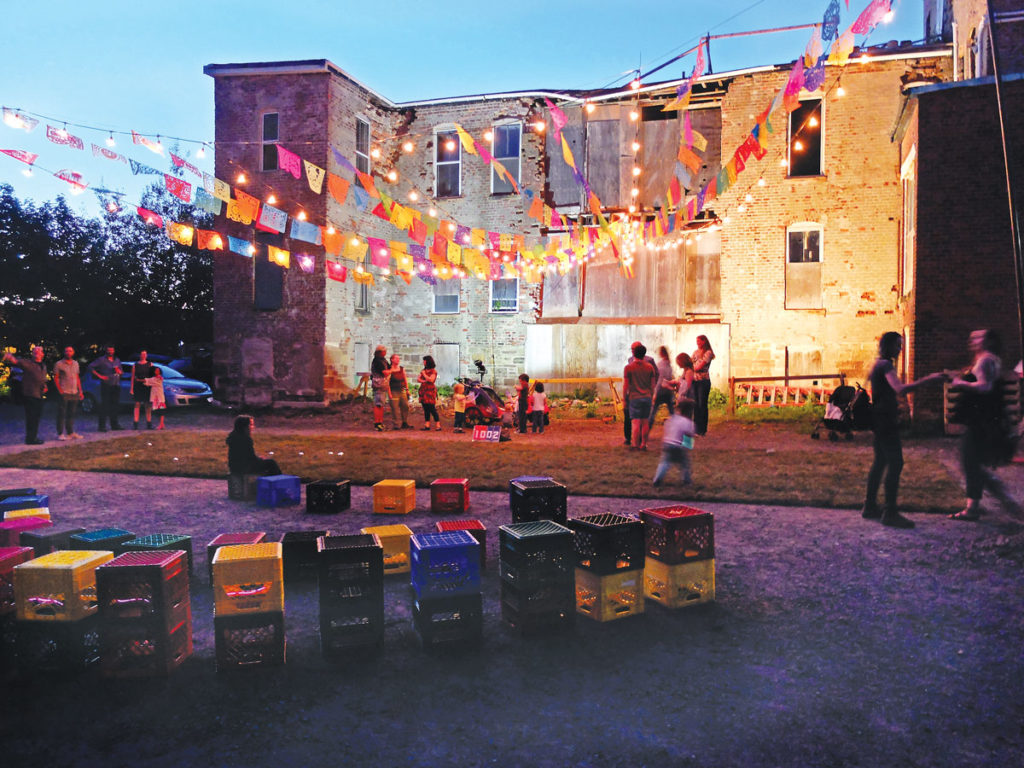When New Brunswick’s Acre Architects made the Wallpaper* Architects’ Directory 2016, a prestigious list of 20 rising stars from around the world, its founders couldn’t get their hands on a copy—the magazine is not sold anywhere in the province.
That disconnect between an unlikely base and global ambitions is something Acre co-founders Monica Adair and husband Stephen Kopp have turned to their advantage, building, since 2010, a firm that celebrates the freedom of the fringe. When the couple, who met as students at the University of Toronto, left jobs at a large New York firm in 2007, they found a frontier of sorts in Adair’s native New Brunswick, free from the conventions and congestion of design centres. “The Wild East,” Kopp calls it.
Now, in what may prove their most transformative project yet, the couple will turn their attention to the elephant in their profession’s room by showcasing inspiring female role models as a counter to architecture’s stubborn gender imbalance. “As architects, we are always working to advance our buildings. But what does it say if we can’t advance our profession?” Adair says.
After winning the Royal Architectural Institute of Canada’s Young Architect Award in 2015, Adair started to notice the paucity of other women in architectural practices. When she and Kopp asked colleagues to name their favourite female architects, many couldn’t name any beyond the late Zaha Hadid or the wifely halves of prominent design couples.
“For me it, was a bit of a flooring moment,” Kopp says. “We were part of it, too. We didn’t have great answers either.”
Women make up approximately half of architecture-school graduates in Canada, but less than a third of its registered architects. While there are notable examples of women leading firms, such as Patricia Patkau of Patkau Architects in Vancouver and Brigitte Shim of Shim-Sutcliffe in Toronto, there remain few spots for women at the top. Commonly cited reasons for this, according to a recent survey by the American Institute of Architects, are long hours, childcare responsibilities, unequal pay and fewer advancement opportunities.
“There are very few role models, very few principals,” says Annmarie Adams, a professor and former director of the School of Architecture at McGill University. An architectural historian by training, Adams has written extensively on gendered space, including co-authoring ‘Designing Women’: Gender and the Architecture Profession (2000). For more than 20 years, she was the sole female faculty member of McGill’s School of Architecture.
“When you’re the only anything, you always feel that you’re the shape that didn’t fit into the mould,” she says. “When I became the director, it was funny to be the only woman and the boss.”
Adams wrote in support of Acre’s idea to interview female architects around the world about how they made it, then share their stories through film, print and more. Acre is proposing that project for the 2017 Prix de Rome in Architecture for Emerging Practitioners, the Canada Council’s annual prize for young architects with exceptional artistic potential. While the $34,000 purse would bankroll extensive research travel, the Acre founders say, Prix de Rome or not, sharing more women’s voices is just part of their practice and priorities moving ahead.
Based in a province with no architecture school, a struggling economy, an aging population and, according to a national report from April 2016, only 14 practicing architects under the age of 40—three of whom are in their firm—Acre upends received wisdom about where and how greatness occurs. Their unorthodox methods are by choice as much as by necessity. Rather than wait for clients, Acre will work backwards from a design problem, pitching solutions to potential partners, and pushing them to imagine what a project could mean beyond its aesthetic, formal appeal.
Championing more meaningful ways of living is always the goal, and Adair and Kopp take a show-don’t-tell approach to making changes. To advocate for more pedestrian streets, they recently devised The Parc (2015), a public art installation in Saint John in which they laid sod and strung lights in a dark alley, transforming a peripheral space into a people place. As a result, the public got excited about more car-free urban sites, and shortly after, the city’s head of planning encouraged council to make it easier to close streets for festivals and events.
Acre wants to bring that same infectious spirit to women in architecture by seeking out exceptional role models, starting with their Prix de Rome proposal.
“What can they teach us?” Adair asks. “Maybe it’s a voice for people who actually don’t get heard a lot.”
Kopp, who first conceived of the project, believes that women’s perspectives are unique and that the entire profession suffers when their ideas are excluded. “What amazing women have been under the radar and should be talked about?” Kopp asks. “We are what we create. An idea can be more powerful than a bricks-and-mortar structure.”
Kate Wallace is an award-winning arts writer in Saint John. She is the founder of Pigeon, a creative communications company.
This article is part of Canadian Art’s Spotlight on New Brunswick series, created with the support of the Sheila Hugh Mackay Foundation.
This article originally appeared in the Spring 2017 issue of Canadian Art. To get each issue of our magazine delivered to you before it hits newsstands, visit canadianart.ca/subscribe.

 Acre Architects’ installation Le Parc (2016) at Third Shift, an event occupying under-utilized spaces in uptown Saint John, New Brunswick. Photo: Kale Harper.
Acre Architects’ installation Le Parc (2016) at Third Shift, an event occupying under-utilized spaces in uptown Saint John, New Brunswick. Photo: Kale Harper.







